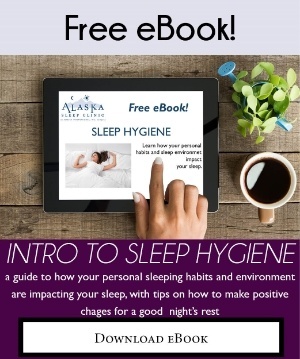
For shift workers with atypical schedules, daytime sleeping is often essential. Around 15 million American adults work night shifts and nearly 19% work at least 48 hours per week. Shift workers and people working long hours often rely on sleeping during the day to negate some of the effects of sleep deprivation.
Although inadequate or irregular sleep is associated with adverse health, work, and social outcomes, daytime sleeping isn’t as detrimental to a person’s sleep-wake cycle as previously thought. Napping can actually improve sleep quality for shift workers and the sleep-deprived. Studies show that sleeping during the day may also benefit those with normal sleep patterns. While the extent and range of benefits depend on factors related to sleep need, napping can improve mood, focus, and cognitive function.
It might not seem like there is a right way to nap, but there are a few things to consider in order to reap the most benefits. Daytime sleeping doesn’t have to interfere with your normal sleep schedule if you follow some guidelines.
Limit Your Nap to 30 Minutes or Less
You might think that a longer nap produces more benefits, but sometimes less is more. A study found that naps lasting between 10 and 30 minutes are often the most beneficial. Following a period of sleep deprivation, a 5-minute nap results in very few advantages when compared to not napping at all. A 10-minute afternoon nap, however, is shown to produce a number of immediate gains, including increased energy and cognitive function. The benefits of a 10-minute nap can last as long as 155 minutes.
A 20-minute nap also increases vigor and mental performance, but the benefits might not be felt until 35 minutes or so after the nap. Despite the brief delay, the advantages last nearly as long as those gained from a 10-minute nap.
A 30-minute nap, on the other hand, is associated with fatigue and sluggishness immediately following the nap. The grogginess sometimes felt after a nap is known as sleep inertia. There may be initial sleep inertia following a 30-minute nap, but once benefits like increased alertness kick in, they last as long as those gained from a 10-minute nap.
While longer naps can be more restorative in cases of extreme sleep deprivation, they also tend to produce more sleep inertia because of increased deep sleep. People who nap 45 minutes or longer often wake up confused and sluggish. Long naps can also interfere with a person’s nocturnal sleep schedule, delaying falling asleep at night. Although ideal nap length depends on individual factors, the best range for most people appears to be between 10 and 30 minutes.
Time Your Nap Carefully
Not only is nap length key, but when you time your nap is also important. Our sleep-wake cycle is part of our circadian rhythm, which refers to natural fluctuations in our physiology within a 24-hour period. Energy levels tend to plummet in the afternoon, making it a popular time to nap. Sleep latency (how quickly we fall asleep) and sleep efficiency is greater in naps taken between 3 p.m and 5 p.m. Research shows that evening naps result in more sleep inertia, leaving you feeling less refreshed.
Because circadian rhythm influences nap outcomes, it makes sense to strategically time your nap, especially if you’re a shift worker. Studies show that cognitive performance and energy levels improve when a nap is taken early on during a period of extended wakefulness. It’s also important to nap early enough in the day that the nap doesn’t interfere with falling asleep at bedtime.
Consider Making Naps Habitual
Adopting a consistent nap routine might not be possible if you work an irregular schedule, but it can be helpful for those with relatively predictable sleep schedules. Research indicates that habitual nappers receive greater overall benefits and can also initiate naps faster. Non-habitual nappers typically experience more sleep inertia following a nap. The old adage that practice makes perfect may apply to napping.
Make Sure You Have an Environment Conducive for Napping
Noise and light are the two biggest factors that can undermine a daytime nap. Silencing your phone and letting family members or roommates know you’re napping can help prevent disturbances. Earplugs can also buffer loud or unexpected noises. Sound-insulating curtains can minimize outside noise and are especially helpful for city dwellers. Dark curtains also block out light and help trick your body into thinking it’s nighttime.
In addition to light and sound, the room temperature can also make or break a nap. A person’s core temperature tends to drop during sleep, so keeping your nap space slightly cooler can signal sleep to your body. As is the case with nocturnal sleep, having comfortable bedding and breathable clothing may positively influence daytime napping.
It can be difficult to keep up in a fast-paced world, but napping can effectively restore energy levels when used wisely. There isn’t a single nap length and time of day that is optimal for everyone. Sleep need, schedule, and personal preferences will all factor in. It might take some experimenting to figure out what works best for you, but sleeping during the day can be a part of a healthy sleep regimen.
What is the secret to balanced sleep when working inconsistently?

Sleep Management for Shift Workers: How to Get Better Sleep
Employers of shift workers are starting to understand the importance of quality sleep for their employees.
Poor sleep in workers can lead to poor work performance including difficulty concentrating, decreased productivity, more mistakes, and increased chance of accidents, injuries, and even death.
It is beneficial to both employees and employers alike to take steps to alleviate the impact that poor quality sleep can have on a worker suffering from a shift-work sleep disorder.
Here are some tips for managing sleep as a shift worker:
Make sleep a priority. If not getting enough sleep is a primary concern for you, be extra diligent in doing the things that help promote healthy sleep, and avoid the things that disturb or rob you of sleep.
Target things that are disrupting your sleep. For example, if you live in a home where others are awake while you are sleeping, ask them to keep noise down while you’re sleeping, and not to disturb you. Make sure everyone in the household understands the importance of you getting quality sleep.
Keep a sleep diary. If you’re having trouble discovering what factors are contributing to your sleep loss, writing in a sleep diary can help you identify things that could be robbing you of sleep.
Get regular exercise. Make sure however that your workouts are at key times of the day. Exercising in the morning is a great way to get an energy boost and helps your metabolism speed up. However, exercising before bedtime can make it more difficult to fall asleep because your body temperature will be elevated.
Keep your bedroom dark, cool, and quiet. Learn more about maximizing your sleep environment.
Ditch your digital devices. The light from your phone, tablet, computer, etc., tricks your brain into thinking it’s daylight, keeping you awake longer.
If you drive home from work in the morning light, wear dark sunglasses. Avoid daylight just before bedtime as it can trick your circadian rhythm into not producing melatonin, a hormone that helps regulate sleep.
Use a “white noise” machine to block out distracting sounds if you have family members awake in the house during your sleep hours.
Take sleep-promoting supplements like melatonin at key times to help train your circadian rhythm to match your sleep schedule
Practice sleep hygiene techniques.












